It is widely recognized that partnering with micro-influencers will be a top trend in influencer marketing for brands in 2025.
Although micro-influencers usually have between 10,000 and 100,000 followers, their influence is anything but “micro.” In fact, they often provide significant value and engagement for brands.
So, what defines a micro-influencer? Why do they matter so much? This post explores proven strategies to find the right micro-influencers, including influencer marketing tools, social media searches, and other effective methods.
Understanding Micro-Influencers: Who They Are and Why They Matter
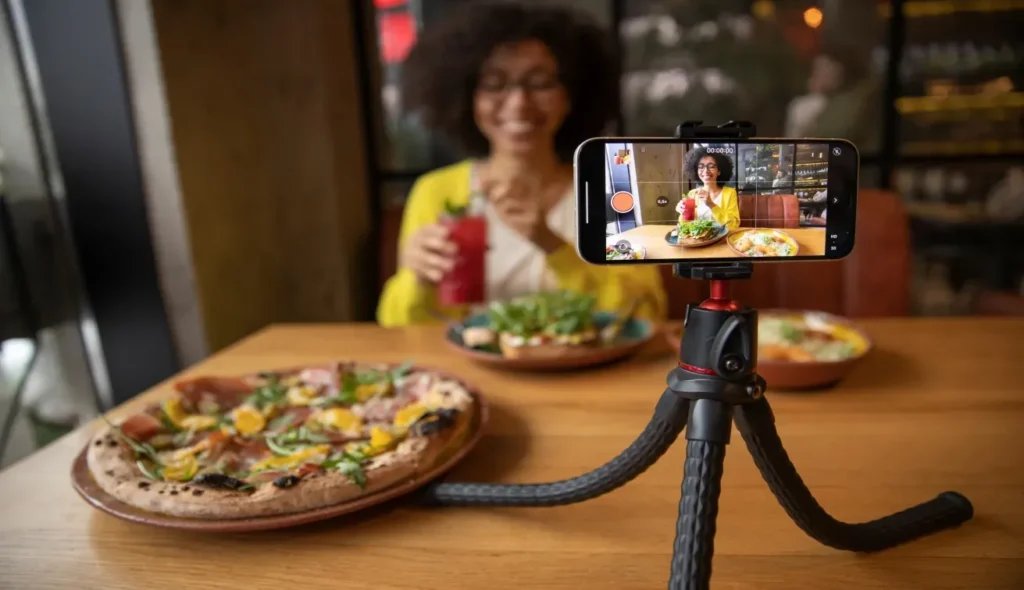
Micro-influencers typically have between 10,000 and 100,000 followers. Despite being smaller accounts, their impact is far from “micro.” On the contrary, they often deliver more value for brands.
Nano vs Micro vs Macro vs Mega Influencers
Influencers are generally categorized into four levels based on their follower counts: Nano, Micro, Macro, and Mega.
- Nano influencers: Those with 1,000 to 10,000 followers. These accounts have extremely high engagement and personal trust with their followers. They are perfect for hyper-targeted, localized campaigns.
- Micro influencers: Those with 10,000 to 100,000 followers. They often focus on niche topics or industries, making them ideal partners for brands targeting specific market segments.
- Macro influencers: Those with 100,000 to 1 million followers. They are well-known within specific industries or niches, offering a balance between broad visibility and strong engagement, ideal for expanding a brand’s reach within targeted verticals while maintaining higher engagement rates.
- Mega influencers: Those with huge followings of a million plus. Their widespread reach enables them to significantly influence consumer behavior and popular culture.
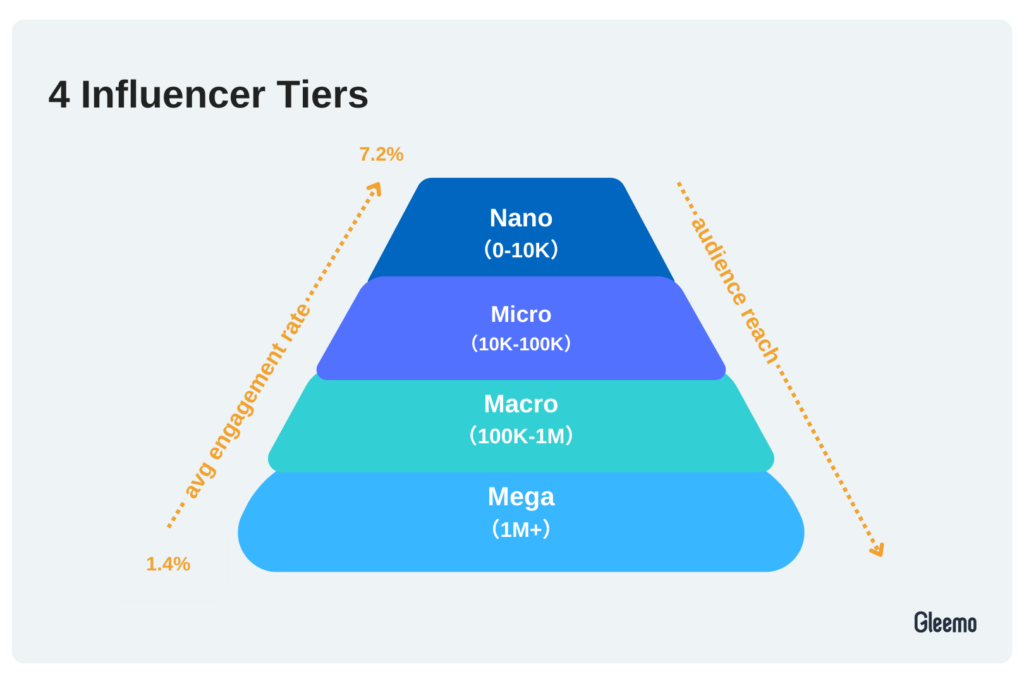
Why do micro-influencers matter?
Micro-influencers matter because they offer high engagement, access to niche audiences, and stronger trust than larger creators. While their follower counts are often smaller, they have highly engaged audiences (compared to the audience of, say, a celebrity influencer), leading to better engagement and higher credibility.
For brands, this means more cost-effective influencer marketing campaigns, better targeting, and higher potential ROI. Micro-influencers are especially valuable for reaching specific communities with authentic content that drives real action, making them a smart choice for both awareness and performance-focused marketing.
Top 5 Reasons of Partnering with Micro-Influencers in 2025
Micro influencer marketing brings many benefits to brands; it increases brand awareness, improves engagement metrics and allows them to reach a more specific target audience.
Let’s explore these in more detail.
1. Higher Engagement Rates
According to a study by Influencer Marketing Hub, there is an inverse relationship between follower count and average engagement rate. For instance,
- Instagram accounts with over 100,000 followers have an average engagement rate of 1.4%
- Instagram accounts with fewer than 1,000 followers boast an average engagement rate of 7.2%.
Due to these stronger relationships, micro-influencers are better equipped to drive audience participation and spark meaningful brand conversations.
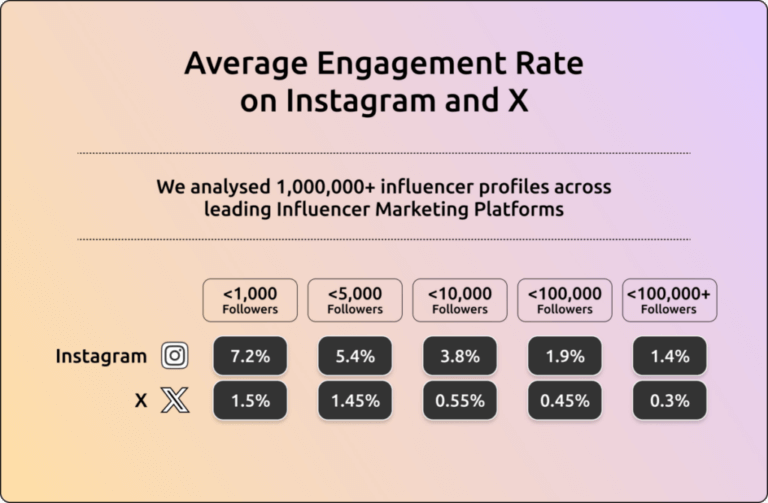
Image source: Influencer Marketing Hub
2. Budget-Friendly Partnerships
Collaborating with micro-influencers is significantly more affordable than working with top-tier influencers, allowing brands to manage budgets efficiently. For example, on TikTok:
- Micro-influencer posts typically cost between $5 and $125, while posts from
- Macro-influencer posts typically cost between $1,250 and $2,500.
By partnering with multiple micro-influencers, brands can diversify risk and expand their reach at a lower cost.
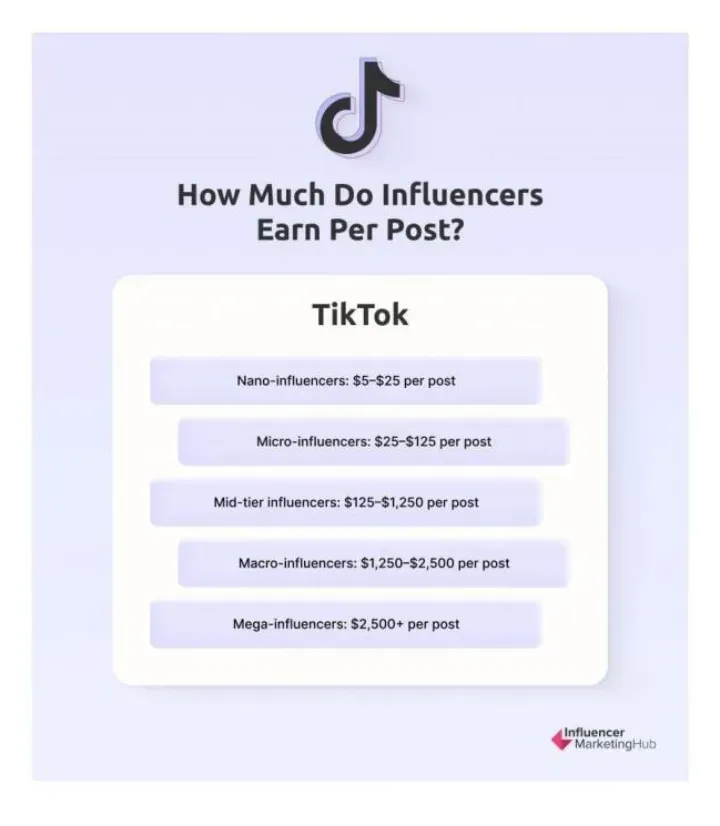
Image source: Influencer Marketing Hub
3. Enhanced Credibility and Authenticity
Micro-influencers tend to have close-knit relationships with their followers, which fosters high levels of trust; this makes them great brand ambassadors.
As Seth Godin says, “People like us do things like this.” Consumers are increasingly drawn to authenticity and are more likely to trust product or service recommendations from influencers with smaller, more engaged audiences. Collaborating with micro-influencers can help brands build credibility and cultivate loyalty.
4. Target Your Audience from Niche Communities
Micro-influencers often cater to highly specific audiences within a particular niche, enabling brands to precisely target potential customers. For instance, a food brand could partner with a micro-influencer who is passionate about sharing culinary content to connect with an audience that is more likely to convert.
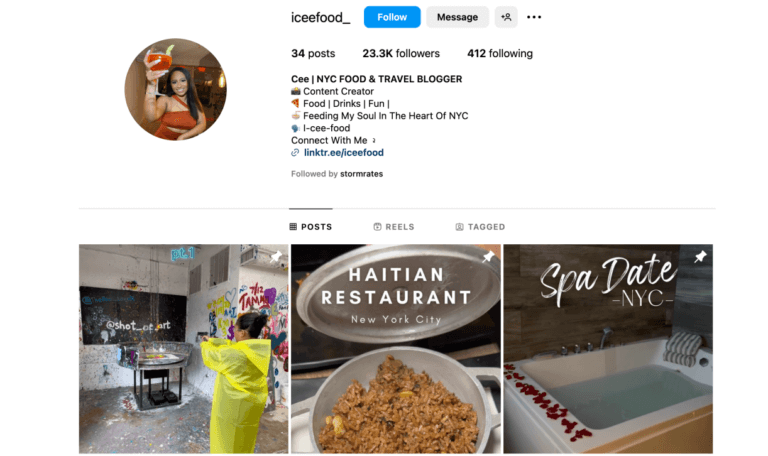
5. Faster Response and More Flexible Partnership
Compared to macro or mega influencers, who often require extensive negotiations and longer response times, micro-influencers are generally easier to approach and ready to collaborate quickly.
5 Tips to Find Micro-Influencers for Your Brand
Many business owners and marketing teams spend their marketing dollars on celebs and influencers with millions of followers. However, statistics indicate that partnering with micro-influencers can deliver significant benefits without extensive costs.
Here are 5 tips to help you connect with the best creators in your niche:
1. Utilizing Influencer Search Tools
Gleemo is an influencer search tool trusted by over 1,000 brands globally. Our platform makes finding micro-influencers for your brand simple with a four-step process.
Step 1: Sign up on Gleemo and receive 50 free search credits. With this offer, you can find micro-influencers for free. Then, subscribe to a paid plan to obtain additional credits and unlock the Influencer Management feature. Subscribers can download influencer information in CSV format.
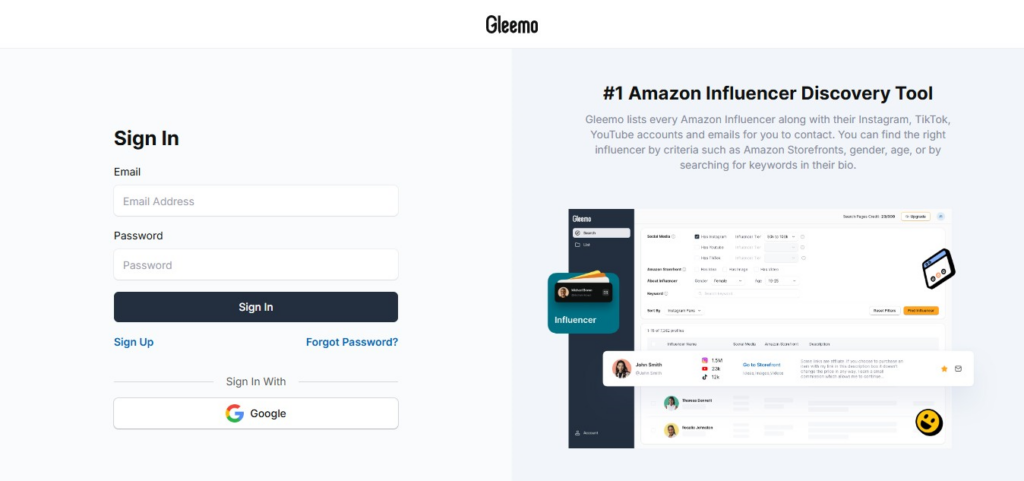
Step 2: Gleemo provides an easy-to-use influencer search and robust filters. On the home page, click “Dashboard” to go to the search page. You can filter profiles by social media accounts, influencer tier (follower counts), engagement rate, gender, age, keywords, interests, and contact options like email and bio link.
These filters allow you to identify the best influencers for your marketing needs.
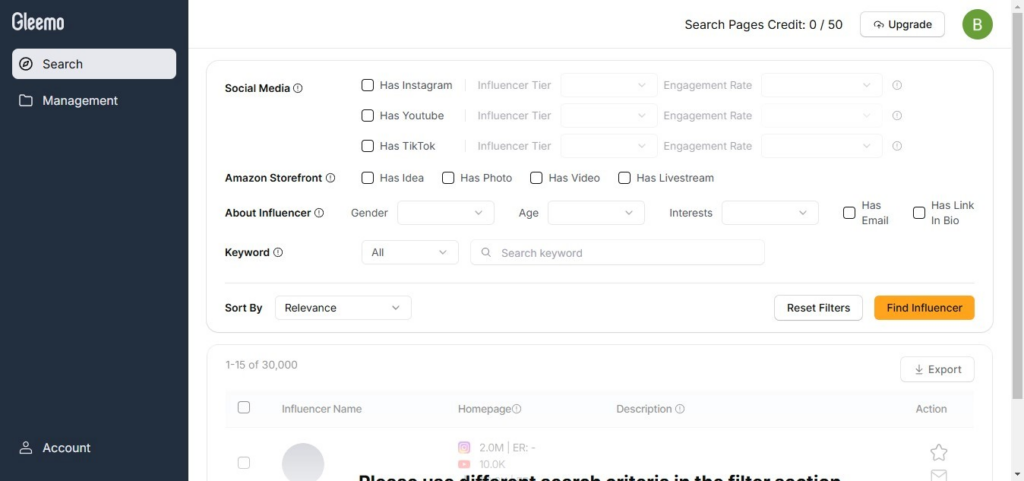
Step 3: Gleemo visualizes micro-influencers across social media platforms. After setting your filters, click the “Find Influencer” button to see the list of micro-influencers who fit your requirements. The page highlights each influencer’s latest engagement rates across Instagram, TikTok, and YouTube. Click “More” to analyze the influencer’s Instagram, TikTok, Amazon and YouTube bios.

Step 4: Gleemo allows you to save information on several influencers with a single click. First, tap the checkboxes next to the influencer’s name to add them to your list. Then, click the “Bulk Save” button to save their details. You can contact micro-influencers on your list to promote your brand or products.
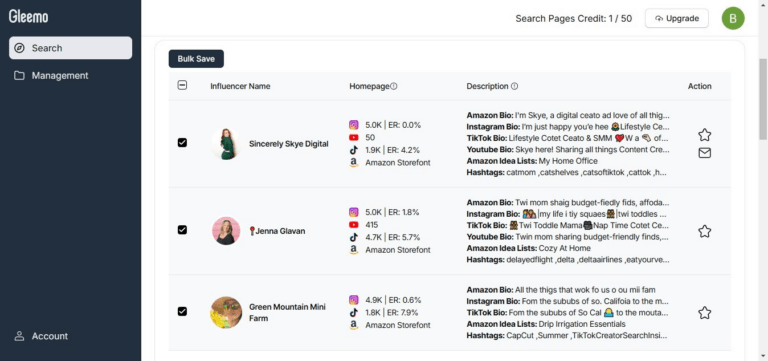
2. Organic social media search and hashtags
Influencers use hashtags to improve content distribution and target specific social media users. These hashtags link content with similar topics, enhancing discovery. They can also help you find micro-influencers who align with your business.
Search several hashtags related to your brand, product, or industry. Then, analyze influencer profiles, views, number of followers, location, and contacts across social media platforms. This strategy is tedious and prone to errors.
Use Gleemo to find micro-influencers with all mission-critical information, from hashtags to followers and engagement rates across Instagram, TikTok, and YouTube. Why waste time on labor-intensive processes when you can access everything you need on a single platform?
3. Find micro-influencers on adjacent niches
Although focusing on your niche ensures you target the ideal audience, it denies your brand growth opportunities in adjacent niches. Many products cater to several consumer segments. For example, your business offers nutrient-rich shakes for fitness enthusiasts, athletes, and health-conscious busy professionals.
Instead of focusing on one niche, find micro-influencers across all three niches to boost sales. You can use Gleemo.ai to expand your search beyond your traditional segment.
4. Search for micro-influencer doppelgangers
Think of how photocopying works. After writing the first document, photocopy it to create several identical copies. You can apply this strategy to grow your marketing team. If you found the perfect social media creator, search for their doppelgangers online.
Instagram, TikTok, and YouTube algorithms analyze your favorite content and recommend micro-influencers with similar posts. However, this process is laborious and only works for brands seeking to replicate their existing micro-influencer.
5. Partner with a marketing agency
Some businesses rely on agencies to find micro-influencers. They outsource their influencer marketing activities to industry experts. However, working with an agency can be costly and undermine the brand’s control over the process.
Some agencies don’t have a comprehensive micro-influencer database like Gleemo. To avoid risks, you can use Gleemo to find micro-influencers online. This influencer discovery platform uses the self-serve approach, giving you control over the process without wasting your time and marketing dollars.
Best Practices for Partnering with Micro-Influencers
To get the most out of any influencer marketing campaign, you need to follow a few best practices.
Establishing Clear Campaign Objectives
Define clear campaign goals, such as driving traffic, increasing brand awareness, or generating sales.
Ensuring Alignment of Brand Values and Influencer Content
Authenticity is key when working with micro-influencers. Ensure that the influencer’s values and content style align with your brand’s identity.
Setting Transparent Communication and Expectations
Clear communication from the beginning is key. Discuss deliverables, timelines, compensation, and any creative direction you may have. Transparency prevents misunderstandings and ensures a smoother collaboration.
Monitoring and Measuring Campaign Performance
Track the performance of your influencer campaigns using analytics tools, like Gleemo. Monitor metrics such as engagement rates, reach, conversions, and sentiment to evaluate the effectiveness of your collaboration.
Building Long-Term Relationships
Long-term partnerships can lead to deeper trust, more authentic content, and a stronger connection with the influencer’s audience.
Examples of Brands Collaborating with Micro-Influencers
It’s not just up-and-coming brands that use influencer marketing to spread brand awareness. Some of the biggest brands in the world work with micro influencers to promote their products and services across the internet and social media channels.
- Apple: By collaborating with tech-savvy micro-influencers, Apple effectively promotes its products, such as the iPhone and Apple Watch. These influencers showcase innovative features and quality through personal experiences and creative content.
- Daniel Wellington: The Swedish watch brand worked with micro-influencers who used everyday photos to highlight the watches’ stylish appeal, helping the brand connect with younger audiences.
- Fenty Beauty: By engaging numerous micro-influencers across social platforms, Fenty Beauty demonstrated its products’ inclusivity and appeal to diverse audiences.
- L’Oréal: Frequently partners with micro-influencers to promote skincare and cosmetics. These influencers often share tutorials and unboxing videos, boosting L’Oréal’s relatability and market penetration.
- Starbucks: Micro-influencers share personalized coffee experiences and seasonal offerings (like pumpkin lattes), creating authentic content that resonates with everyday coffee drinkers and drives seasonal product sales.
- Lush: Collaborates with micro-influencers to amplify its eco-friendly and sustainable messaging. Influencers share product reviews and experiences, emphasizing the brand’s natural and cruelty-free ethos.

When Not to Work with Micro-Influencers
Finding the right influencers for any influencer campaign is important to ensuring the best ROI on your marketing efforts.
1. Brand Goals Misaligned with Micro-Influencers’ Reach
Micro-influencers excel with smaller, focused audiences, but for brands aiming for widespread awareness (e.g., global launches or entering new markets), they may lack the needed reach.
2. High-End Product Positioning
Luxury brands targeting a select demographic may find micro-influencers less effective or inconsistent with their premium positioning.
3. Urgent Need for Sales Conversion
The impact of micro-influencers is often gradual, requiring time to build. For brands seeking immediate sales boosts (e.g., during promotional campaigns), micro-influencers might fall short.
4. Poor Audience Alignment
If you’re a brand working in the beauty industry, there is little benefit to working with travel influencers who have little overlap with your target audience.
Gleemo: Your all-in-one influencer platform
Although micro-influencers have less than 100,000 followers, they can benefit your business more than macro-influencers. They can help your brand reach and engage the target audience authentically and cost-effectively.
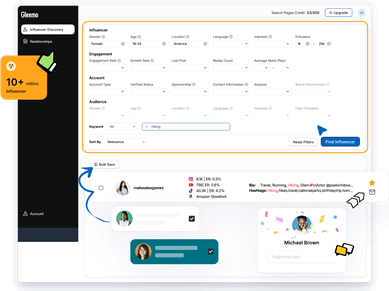
Gleemo is an all-in-one influencer marketing platform that simplifies searching, recruiting, and managing micro-influencers. With our easy-to-use tools, you can find the perfect micro-influencers for your brand in a few clicks and search through our database of over 100 million social media influencers. Try Gleemo for free today!
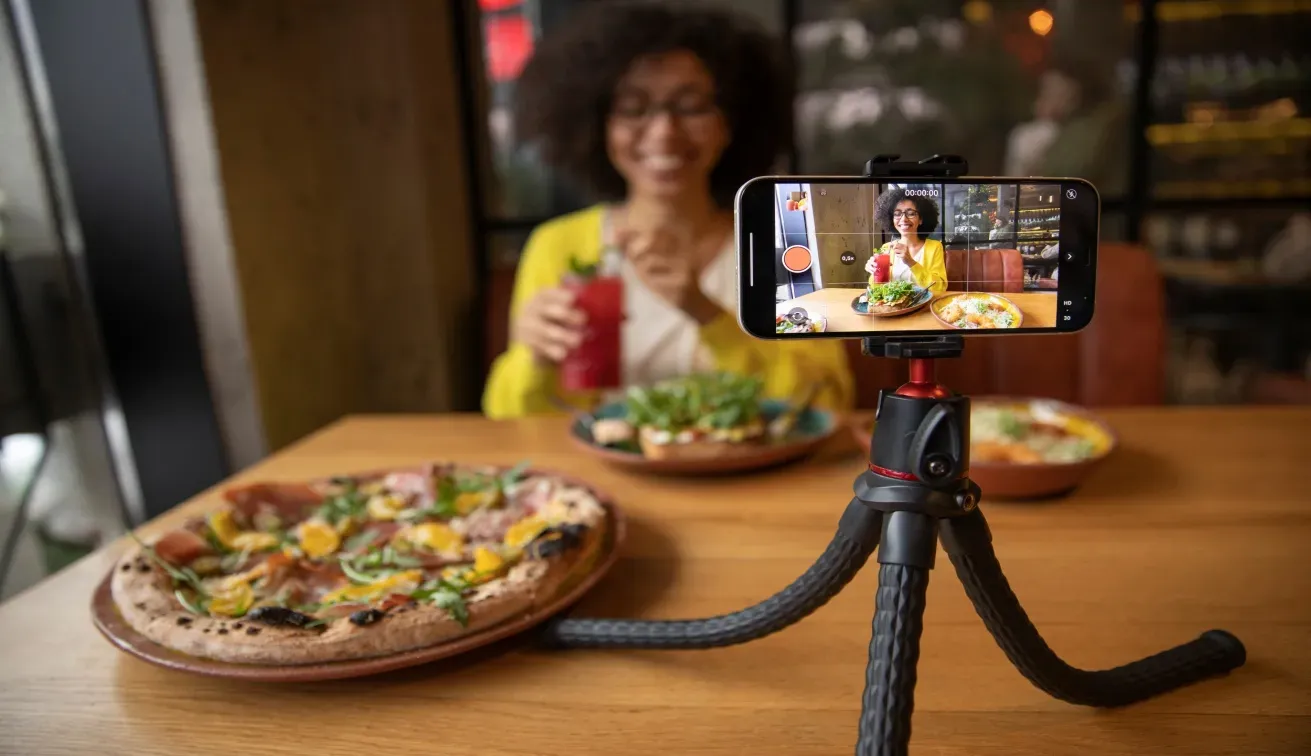
发表回复